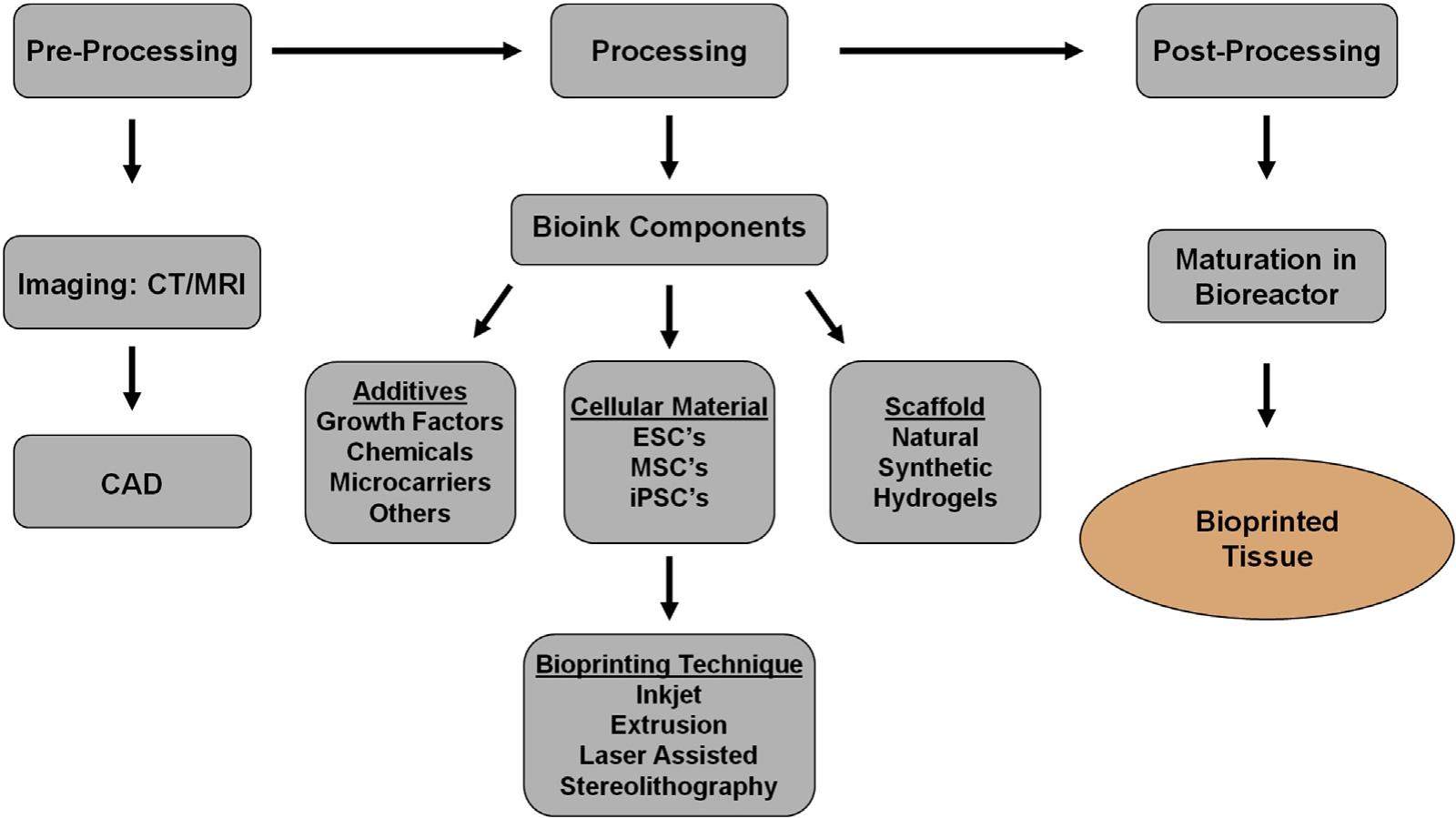
3-D bioprinting technologies in tissue engineering and regenerative medicine: Current and future trends


Advances in three-dimensional (3D) printing have increased feasibility towards the synthesis of living tissues. Known as 3D bioprinting, this technology involves the precise layering of cells, biologic scaffolds, and growth factors with the goal of creating bioidentical tissue for a variety of uses. Early successes have demonstrated distinct advantages over conventional tissue engineering strategies. Not surprisingly, there are current challenges to address before 3D bioprinting becomes clinically relevant. Here we provide an overview of 3D bioprinting technology and discuss key advances, clinical applications, and current limitations. While 3D bioprinting is a relatively novel tissue engineering strategy, it holds great potential to play a key role in personalized medicine.
